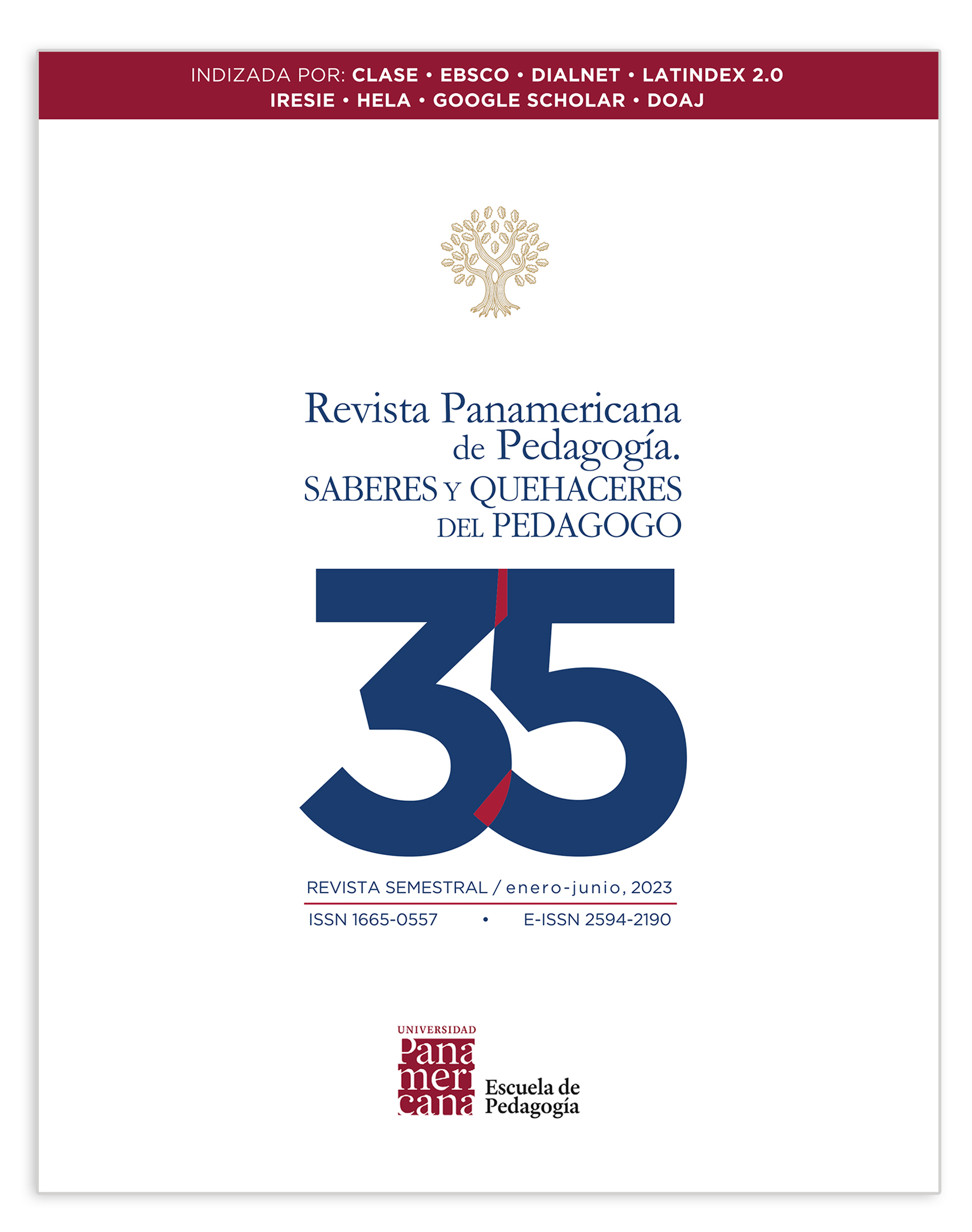Publicado 31-12-2022
Palabras clave
- ajustes,
- aula regular,
- barreras para el aprendizaje y la participación,
- docentes,
- inclusión educativa
Derechos de autor 2022 Revista Panamericana de Pedagogía

Esta obra está bajo una licencia internacional Creative Commons Atribución-NoComercial-CompartirIgual 4.0.
Cómo citar
Resumen
Integración e inclusión son términos que usamos hoy en el ámbito educativo. Más allá de lo planteado en los planes y programas de estudios, y lo que los medios de comunicación nos venden, podemos preguntarnos: ¿en realidad sabemos lo que significa y lo que conlleva? El presente artículo es producto de una investigación en el ámbito educativo de nivel básico primaria, donde los docentes son la fuente principal de información. Ellos emplean la metodología cualitativa, en su más amplio sentido, enfocada a la investigación, que produce datos descriptivos. Esta se describe como el estudio de la gente a partir de lo que dicen y hacen las personas en el escenario sociocultural. Con esta indagación, el objetivo principal es conocer qué tanto se sabe sobre la educación inclusiva y sus necesidades formativas en los educandos, y cuáles son los ajustes razonables que describen en la planeación o en indicadores de evaluación. Asimismo, si los docentes las realizan o no, o simplemente usan los términos, pero no realizan o llevan a cabo las directrices planteadas en su planeación; también, si conocen realmente cuáles son las BAP (Barreras para el Aprendizaje y la Participación) que enfrentan sus alumnos.
Al ser parteaguas de la famosa llamada inclusión educativa, este se describe como el proceso de abordar y responder a la diversidad de necesidades de todos los alumnos, a través de prácticas educativas inclusivas. Sin embargo, a pesar de los avances en ciencia, cambios en los modelos educativos, formas de pensar, y cambios en los planes y programas de estudios, a lo largo de esta investigación nos damos cuenta que muchos docentes siguen con actitudes arcaicas y se niegan a realizar cambios: continúan realizando una carga desproporcionada e inadecuada de actividades, que no son significativas ni garantizan un aprendizaje significativo en el educando.
Referencias
- Ávila Durán, A. L., y Esquivel Cordero, V. E. (2009). Educación inclusiva en nuestras aulas. Coordinación educativa y cultural centroamericana.
- Booth, T., y Ainscow, M. (2000). Índice de inclusión. Desarrollando el aprendizaje y la participación en las escuelas. Reino Unido: UNESCO.
- Frola Ruiz, P. (2004). Un niño especial en mi aula; hacia las escuelas incluyentes. Conceptos y actividades para niños y maestros. México: Trillas.
- Heidegger, M. (2008). Ontología hermenéutica de la facticidad. España: Alianza.
- Hernández Sampieri, R., Fernández Collado, C., y Baptista Lucio, P. (2010). Metodología de la investigación, 5a edición. Ciudad de México: McGraw-Hill.
- Hernández, L. (30 de 01 de 2021). Dis-capacidad. Obtenido de dis-capacidad: https://dis--capacidad-com.cdn.ampproject.org/v/s/dis-capacidad.com/2021/01/30/censo-2020-16-5-de-la-poblacion-en-mexico-son-personas-con-discapacidad/amp/amp_gsa=1&_js_v=a9&usqp=mq331aqkkafqarabiiacaw%3d%3d#amp_tf=de%20%251%24s&aoh=16640471874481&ref
- Martínez Miguelez, M. (1998). La investigación cualitativa etnográfica en educación. Manual teórico práctico. Ciudad de México: Trillas.
- Schneider, S. (2005). Cómo desarrollar la inteligencia y promover las capacidades. Argentina: Reymo.
- Secretaría de Educación, Tabasco (2019). Transición del enfoque de la educación especial a la educación inclusiva. Villahermosa, Tabasco: SE.
- Secretaría de Educación, Tabasco (2015). Semáforo de educación inclusiva. Villahermosa, Tabasco: Secretaría de Educación.
- Secretaría de Educación, Tabasco (2021). Criterios técnicos para la transición de la educación especial y la educación inclusiva. Villahermosa, Tabasco: Secretaría de Educación.
- Stainback, S., y Stainback, W. (2001). Aulas inclusivas. Un modelo para enfocar y vivir el currículo. Madrid: Nuevas Ediciones.






